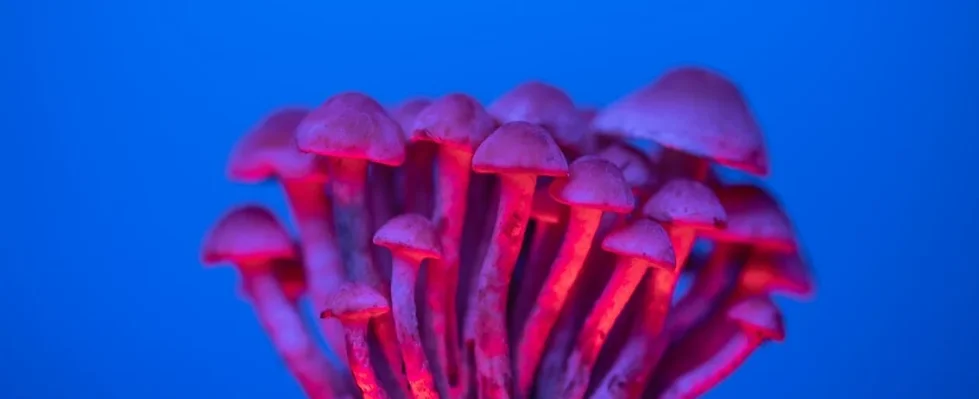Synthetic Psilocybin
Psychedelics like psilocybin have been used for centuries in religious and spiritual ceremonies. But what happens when we take away the magic mushrooms?

In 1957, R. Gordon Wasson, a financial district banker, revealed in Life Magazine his and his photographer, Allan Richardson, encounter with “the first Caucasian men ever to partake in the sacred mushroom” facilitated by Mazatec healer María Sabina. He couldn’t have anticipated the uproar and conversation this event would ignite. Following his exposure to the holy fungi, Wasson arranged for a sample to be sent to Albert Hofmann, the LSD progenitor, who identified its active molecule: psilocybin. In an unpublished conversation, Hofmann expressed that they had successfully encapsulated the essence of mushrooms within these compact pills. Despite María Sabina’s endorsement, disagreement remained regarding potential discrepancies between synthetic psilocybin and mushrooms, which historical evidence indicates have been utilized in religious rituals for centuries. These two realms – contemporary and ancient healing – revolve around a shared particle. However, they diverge when evaluating the implications of isolating and replicating fungi components or plant species like ayahuasca and cannabis for clinical studies. There are 3 primary alkaloids responsible for their mind-altering reactions in psychedelic mushrooms: psilocybin, the main component; psilocin, a metabolite activated after ingestion; and baeocystin, found in limited concentrations in commonly consumed mushrooms.
Synthetic Psilocybin Potential Benefits
Isolated psilocybin has demonstrated potential in treating serious conditions like end-of-life distress, depression, and nicotine dependency, as per contemporary scientific research. While the effects of mushrooms themselves are largely based on anecdotal evidence from clandestine use and spiritual contexts, some experts, such as Sidarta Ribeiro, the Director of the Brain Institute at the Federal University in Rio Grande do Norte, Brazil, propose that the components found in psychedelic mushrooms could interact synergistically, like the diverse chemical components in cannabis, to produce an entourage effect. They suggest that the therapeutic efficacy could be compromised in cases where synthetic psilocybin is used in isolation.
Regulatory Challenges in Synthetic Psilocybin Research
Charles Grob, a psychiatry professor at UCLA, notes the abundance of intriguing narratives within underground circles. On the other hand, he emphasizes the necessity for rigorously conducted studies to comprehensively assess the medicinal value of these substances and gain acceptance within the healthcare system. The stringent regulatory framework for researching treatments mandates approval from entities like the FDA, DEA, and state regulatory bodies, as precise dosing and stability can only be ensured with pure psilocybin, not whole mushrooms. Although Grob acknowledges the feasibility of testing natural mushrooms, he highlights the challenges researchers encounter in a system primarily designed for investigating and endorsing individual compounds, rather than holistic plant materials.
Bridging Ancient Rituals with Modern Science
This dilemma underscores a broader issue faced by researchers in the psychedelic field, where meticulous control and measurement are essential in clinical trials. Consequently, the study of psychedelics deviates from real-world practices, where traditional beliefs and customs influence the perception and experience of hallucinogenic fungi and plants. Within Mazatec traditions, mushrooms are not merely ingredients but entities with their consciousness and purpose, contrasting sharply with the contemporary perception of pills as inert tools for treating illnesses. It is crucial to recognize the diverse cultural roles these plants play and strive for authenticity within our practices. Rather than focusing on superiority, the emphasis should be on understanding the distinctions and exploring how they complement each other. This shift involves distinguishing between plants and fungi and the derivatives obtained from them to avoid confusion and promote informed discourse.